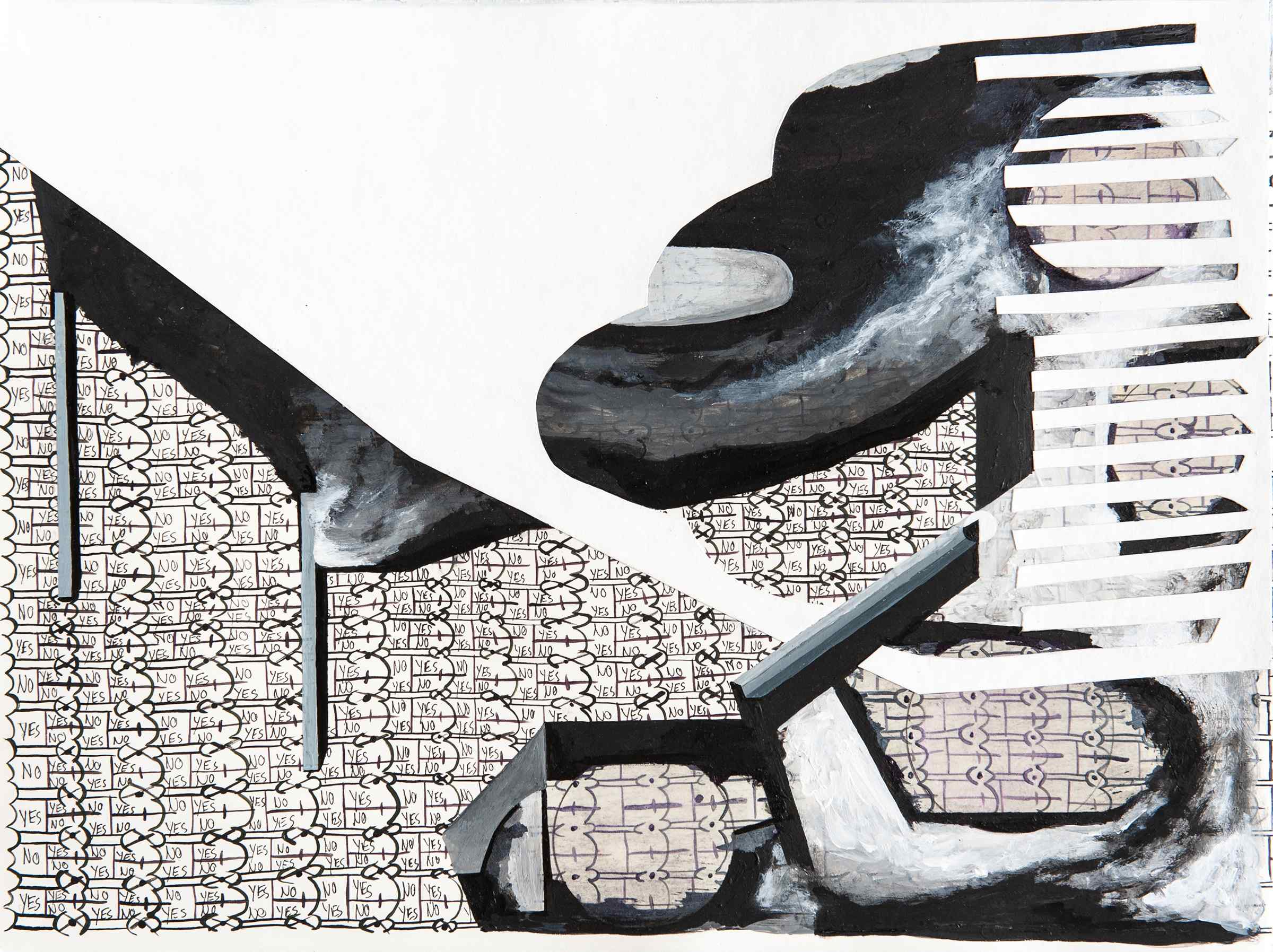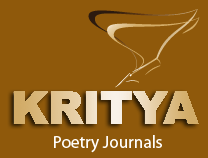
In name of poetry
 The Bhagavad Gitã – a poem that defines life
The Bhagavad Gitã – a poem that defines life
By Dr Vandana R Singh
- The Gitã – a poem divine
In Sanskrit, the language in which it was originally written, The Bhagavad Gitã, literally means the Song of God, Its authorship is usually attributed to Ved Vyas. However, handed down to us over centuries through both multiple mediums some theories of the present day text being a compilation of several scriptures from different sources, is a subject of continued interest and discussion.
The Gitã – an accepted shorter title of the text – as we know it today is a sub set of the epic Mahabharata, occupying chapter 23 to 40 of Book VI of the epic. Composed in the form of a dialogue it is a conversation between a distraught Arjun and his mentor Krishna. It is this conversation that is the text of the Bhagavad Gitã, consisting of eighteen chapters, divided into three segments.
The first six chapters describe karma yog which focusses on attaining deliverance through actions performed without desire for reward. The next six chapters explain bhakti yog i.e. attainment of deliverance through sincere devotion. The last six chapters throw light on jñāna yog which throws light on attaining deliverance through knowledge and pursuit of knowledge.
The Gitã revolves around the soul’s journey from birth to rebirth, and explores different paths leading to deliverance from this endless cycle, which is moksha.
The stress on good deeds and selfless service are well understood by most. So is the belief that when evil starts to overtake the good in the world, the Almighty descends in human form to set right the skewed balance by annihilating evil. These beliefs have parallels in other cultures and faiths too.
The role of popular culture must be acknowledged here in ensuring that the themes of selfless service, duty before self (karma & dharma) have received sufficient footage. The storyline featuring the appearance of a powerful hero to save the world from the clutches of the anti-hero has also been well entrenched into our collective consciousness through varied sources.
While on one plane, the Gitã is multi-layered and granular, on another it is simple, direct and pragmatic. The entire set of teachings is based on the realistic premise that each individual is born with a particular temperament, and so laying down of a single spiritual path for all to walk on, is simply not possible.
This sets the tone for the underlying message of acceptance of individuality as well as plurality. Multiplicity of ideas, thought processes, and subsequent individual actions, are concepts that lie at the heart of this understanding and acceptance.
The fascinating conversation between Arjun and Krishna therefore touches upon and synthesizes several paths to spiritual realization, without overtly declaring one to be superior to another. It will not be at all inappropriate to conclude that the Gitã is an unequivocal supporter of free will and actively encourages human beings to make their own choices in life.
As we proceed from verse to verse, and then chapter to chapter, we are told of the different patterns of life we can opt for while on this earth. We can choose between goodness, passion or ignorance to be the driving engines of our actions. Gradually the ultimate destination of the path we choose to walk on in life, starts to become clear to the reader and the outcome of each and every one of our actions is explained to us in no uncertain terms.
As we read the Gitã, it becomes amply clear that every step we take is the initiating link in the eternal chain of cause and effect, and of action and reaction. No thought or action remains unaccounted for – and eventually paid for – in the balance sheet of life. Or indeed of life after life.
Being privy to the inevitable outcomes of actions, it eventually becomes easier to define our ultimate objectives and identify our destination. Be mindful of how you use the luxury of free will which is at your disposal, and optimise on your individual capabilities for your own good as well as that of the world – of the many things that the Gitã says to us these are some of them.
- The Gitã – exploring the poetry within
The Bhagavad Gitã encourages us to live life with purity, strength, discipline, honesty, kindness and integrity in order to find our purpose and to live it fully. And to do this the Gitã uses epiphany, allegory, analogy, metaphor, simile and indeed metaphysics. But the one strain that runs right through the text and holds it together is poetry. Appropriately titled the Song of God, the Gitã makes use of multiple literary practices while using poetry as its base.
A.
The focus on detachment and self-control is paramount throughout the book. To illustrate the point Krishna creates the analogy of a turtle talking of the hard shell that it shields itself with when faced with danger withdrawing all its limbs in an act of self-protection which he likens with divine consciousness. Verse 2.58 where this occurs is elaborated upon below.
यदा संहरते चायं कूर्मोऽङ्गानीव सर्वश: |
इन्द्रियाणीन्द्रियार्थेभ्यस्तस्य प्रज्ञा प्रतिष्ठिता || 2.58||
yadā sanharate chāyaṁ kūrmo ’ṅgānīva sarvaśhaḥ
indriyāṇīndriyārthebhyas tasya prajñā pratiṣhṭhitā
2.58: One who is able to withdraw the senses from their objects, just as a tortoise withdraws its limbs within its shell, is well established in divine consciousness.
Being in control of the senses is the litmus test that separates a yogi from others. A self-realised soul masters the senses and rules over them rather than allowing the senses to determine any course of action. Most people are driven by the senses and this results in their deflection from the true path.
To achieve divine consciousness one has to be strong and single-minded without losing the capacity to utilise the senses as tools for self-improvement. For instance, using our eyes for reading good books, or using our ears to listen to problems of others so we can be of help.
Krishna here draws an analogy of the turtle that has the fascinating trait of being able to withdraw its head and limbs into its hard shell and bringing these out for use when required. The turtle retracts and recoils in reaction to danger and once the moment passes it activates its head and limbs and moves on. Similarly humans should also detach themselves from the material world which could pose a threat, be in control of their senses and should focus on awakening the inner self.
The hard shell of the turtle teaches a lesson of its own. Though the turtle’s body is soft and vulnerable inside, its outer shell is tough and impermeable not letting any outside elements to make way through its tough exterior and pollute the inner body of the turtle. Mastering the ability to retract and extract at will is a remarkable step towards attaining divine consciousness.
B.
The significance of harmony, order, discipline, the importance of coordination between the mind and body, and the link between life and after life, birth and rebirth are repeatedly reiterated by Krishna in the Gitã. To illustrate these, in verse 7.07 he gives the example of a string of pearls, and the central and very critical role played by the thread, that runs through the pearls to keep them together as a necklace that adorns the neck.
मत्त: परतरं नान्यत्किञ्चिदस्ति धनञ्जय |
मयि सर्वमिदं प्रोतं सूत्रे मणिगणा इव || 7.07 ||
mattaḥ parataraṁ nānyat kiñchid asti dhanañjaya
mayi sarvam idaṁ protaṁ sūtre maṇi-gaṇā iva
7.07: O Arjun, the conqueror of wealth, there is no truth superior to me. Everything rests upon me, as beads strung on a thread.
Addressing Arjun as conqueror of wealth, Krishna discloses that no one is superior to him in the entire universe. Putting to rest any ambiguity or equivocacy, he establishes that he is the Supreme Lord, who is eternal, omniscient, and optimally blissful. He is without beginning and end, he is the origin of all, and it is he who orchestrates all action.
Using the analogy of beads strung on a thread, he says he is the thread that runs through each living being and nurtures them all providing strength, balance, comfort and security. While the beads are independent of each other, are free to move in their given place, have their individuality and independent identity, yet they are bound to the thread. Without the thread, the beads – no matter how valuable or precious – fail to make a mark or find a sought after placement. It is the thread that makes the beads come alive and makes it possible for them to adorn a place of pride.
Just as the beads rest on the thread the entire creation exists with the Supreme Lord at its core. He is the Creator, the Sustainer, and the Annihilator. Without the Supreme Lord holding the Universe together everything will fall apart.
Interestingly, the thread, though critical to the beads’ remaining together and gaining an identity as a necklace, always remains invisible. As a matter of fact if the thread were to be visible the string might be considered a shoddy piece of work!
- The Gitã – balance & rhythm
The Gitã is a literary text that delivers some of the most complex ideas and clarifies many doubts regarding human existence, the purpose of life and how to live it. What makes the text fascinating is the poetic strain that runs through it in its entirety and which opens doors to a storehouse of knowledge using simple literary tools.
In the midst of these complex ideas is enmeshed a certain rhythm and meter. The significance of dwanda, and the rhythmic pattern of Om Tat Sat are two obvious examples which are frequently used in everyday parlance. The inextricable link between guna-nirguna, sat-asat, yog-bhog, karma-dharma, gyan-agyan, is easy to comprehend, memorise and appropriate, largely because of the simple poetry that points out to the duality and well as the polarity of these concepts.
The never-ending connection between cause and effect, birth and re-birth, life and death, attachment and detachment, creation and destruction, mortal vision and cosmic vision, ego and equanimity. Each of these becomes part of our consciousness as the rhythmic pattern that contains these is a constant reminder of the fact that whatever is true, visible and palpable so is its exact opposite equally true, visible and palpable. It is up to us to exercise our free will and create poetry of our own.
This piece would not be complete without mentioning the terza rima – a 3-line rhyming pattern in the Gitã that appears repeatedly. And these are the three gunas or the three modes of material human nature – sattva, rajas and tamas. Sattva is the mode of goodness, rajas is the mode of passion, and tamas is the mode of ignorance. While the word traigunya means three modes, it also describes persons in whom sattva, rajas and tamas all are in abundance.
Krishna says all the gunas are present in each one of us. It is up to us which one we nurture and encourage, and how we allow it to steer our lives. In other words, the songs in your heart are many, the stories in your mind are plenty, but which is the story that resonates with your life and which is the song you choose to sing, is in your hands.
When we find our own story, our own song and create our own unique rhythm in the midst of all these aspects of life, and when we can orchestrate a seamless transition from the outer world to the inner – that is when we can say with confidence that we have created our own Song of Life.
Dr. Vandana R Singh  is an author and literary translator. She was conferred with the Award of Recognition for Outstanding Contribution to Literature by the Chandigarh Sahitya Akademi in 2013. She has authored an interpretation of the Gita titled The Bhagavad Gita – A Life-changing Conversation published by Niyogi Books in 2022.
is an author and literary translator. She was conferred with the Award of Recognition for Outstanding Contribution to Literature by the Chandigarh Sahitya Akademi in 2013. She has authored an interpretation of the Gita titled The Bhagavad Gita – A Life-changing Conversation published by Niyogi Books in 2022.
Vandana R Singh is the Founder & Chairperson of RS Foundation, a philanthropic organization that actively works in the area of health and digital literacy and has education, empowerment and empathy at the core of its varied initiatives in the social sector. (rsfoundation.org.in)
email: vandanarsingh@gmail.com
website: vandanarsingh.com

